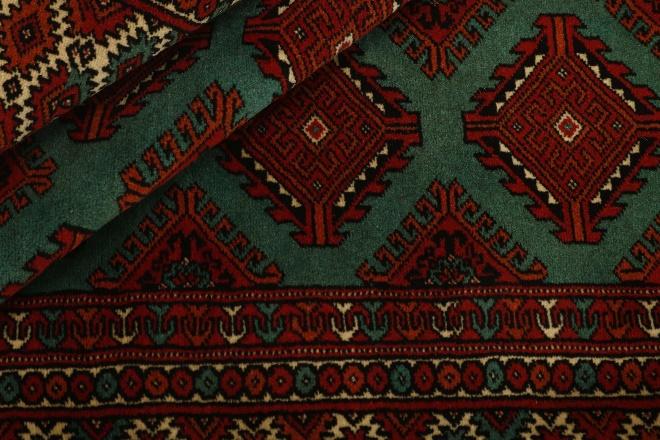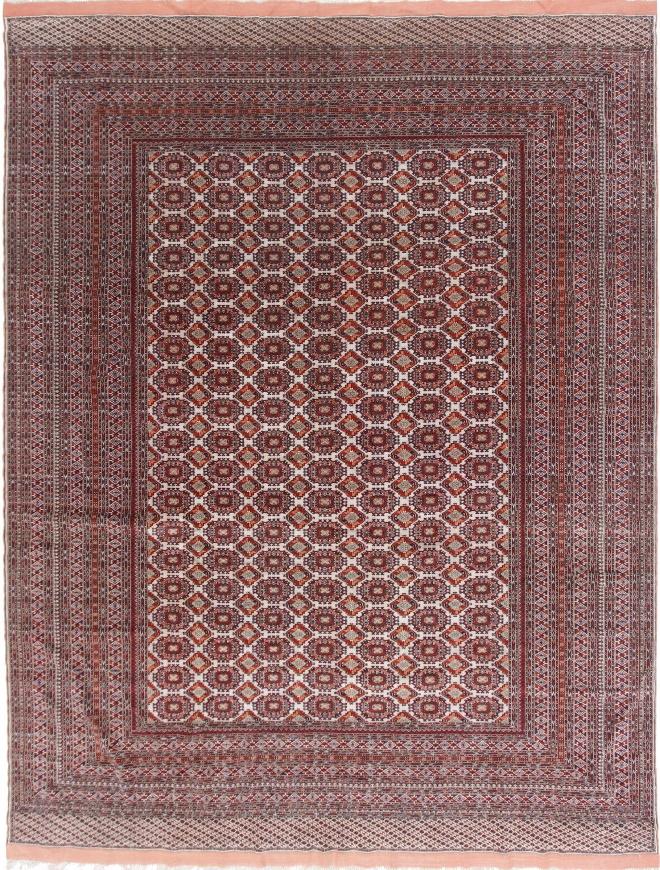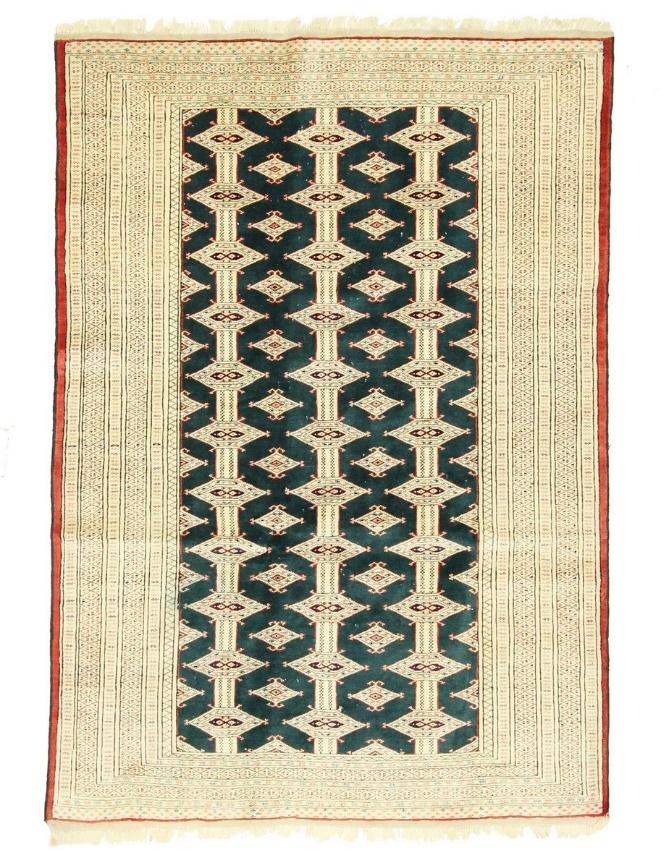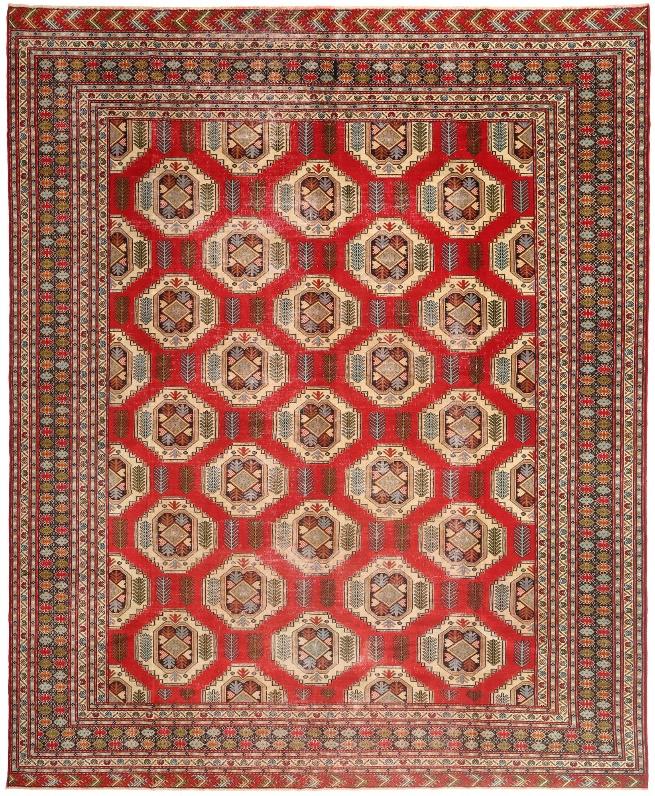Turkmen Rugs
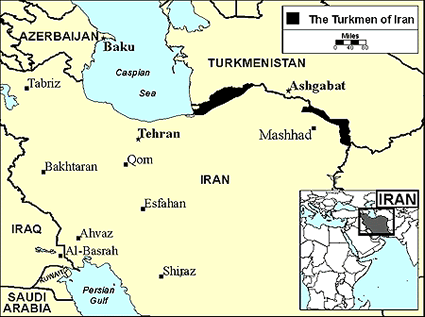
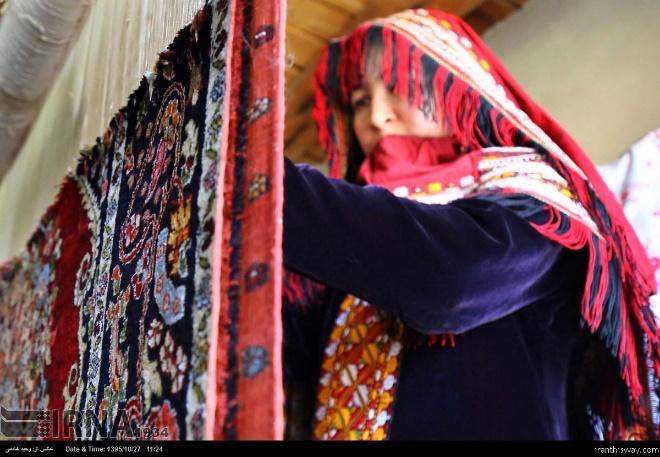
Turkmens are very proud of their hand-woven rugs. Turkmenistan’s flag is adorned with five main patterns of the Turkmen carpets as tokens for the five main Turkmen subtribes: Yomut, Ersari, Saryk, Choudor, and Tekke. Each of these tribes have a specific rug design.
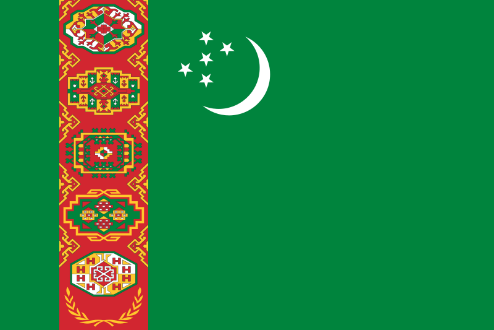
They have appeared in the Persian history with the dominance of a Subtribe called Salor. Salors had been the richest and more powerful Turkmens since the 11th century. Tekkes and Yomuts are descended from this branch. Salors are now settled mainly near Sarakhs in northeastern Iran and their name has remained on some woven pieces from Iranian market.
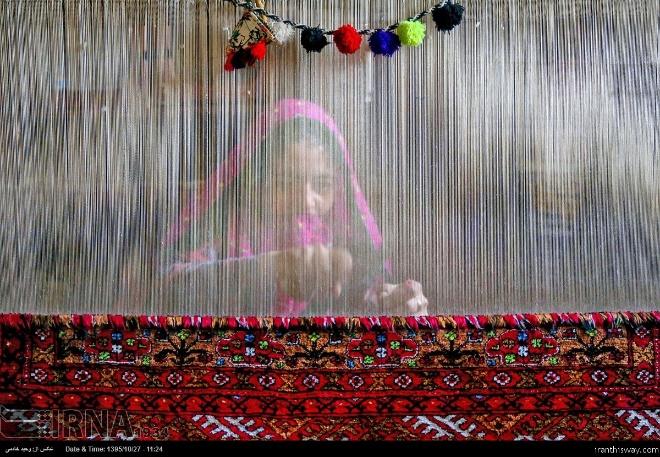
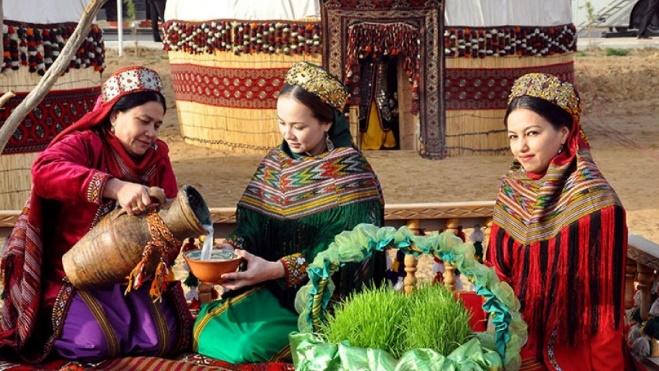
Turkmens of Iran are mostly Yomut and Tekke. They live in Golestan, Northern Khorasan and Razavi Khorasan provinces.
Technical aspects and the structure of Turkmen Rugs
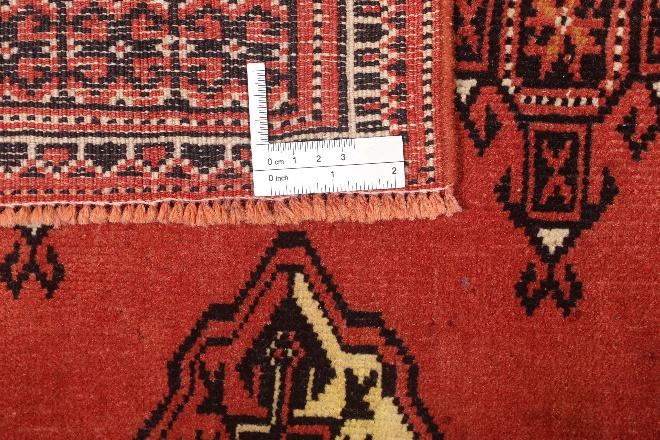
Turkmen rugs used to be fully woolen with exception of silken warps for dowry rugs. Nowadays cotton warp and weft are also could be found.
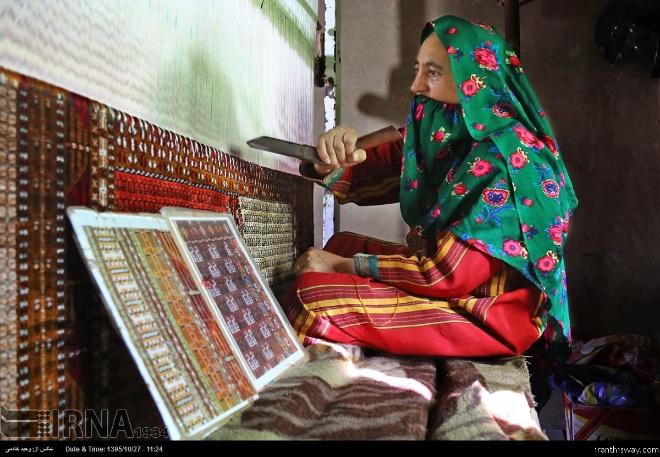
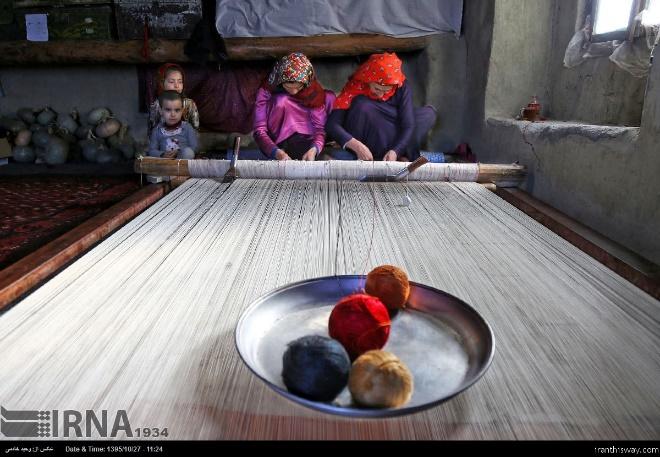

Dyeing and painting of Turkmen rugs
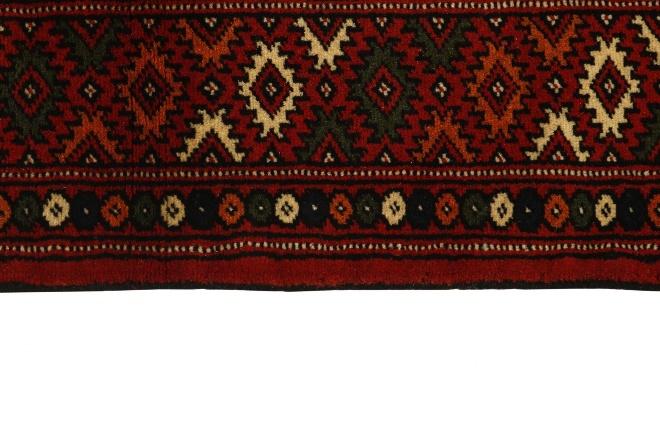
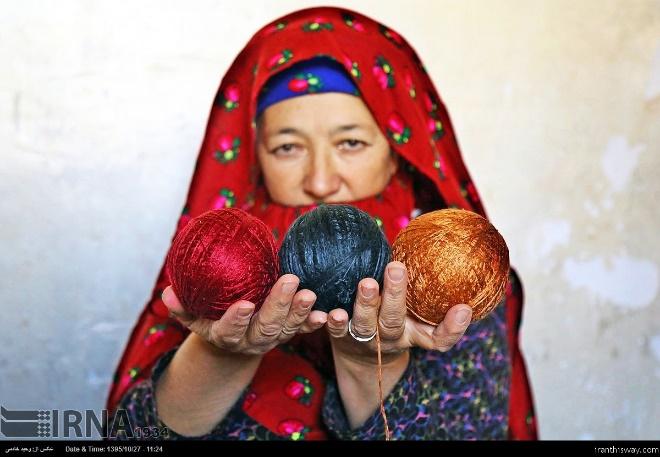
Turkmen palette is rather limited. Variants of crimson are dominant. Dark crimson and yellowish crimson could be mentioned which both are obtained from madder. Subordinate colors are dark blue, white, black, dark green, brown and brownish red, olive, beige and ivory.
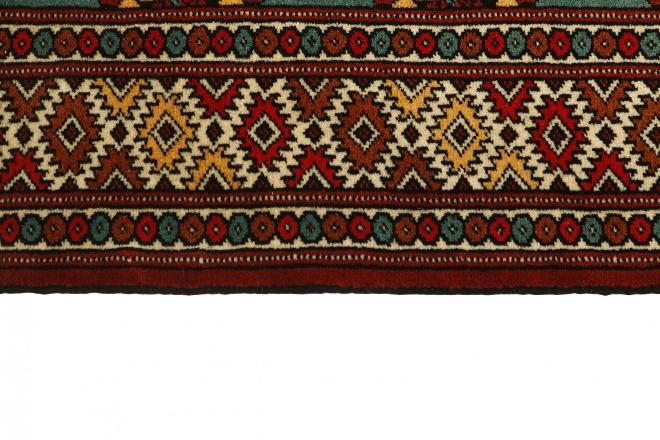
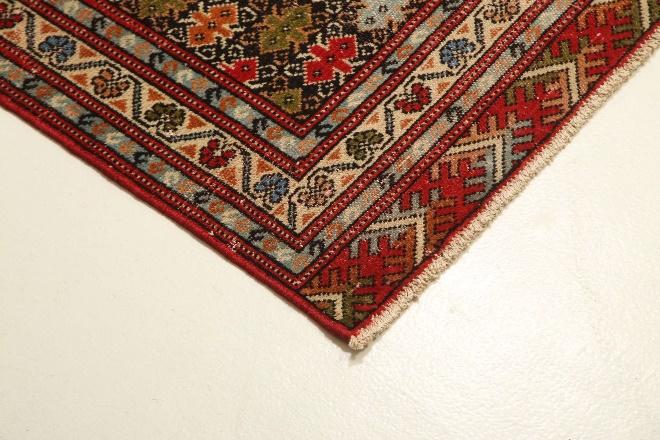
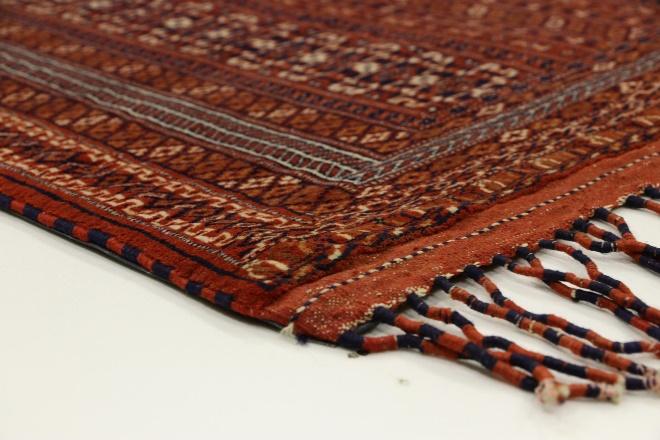
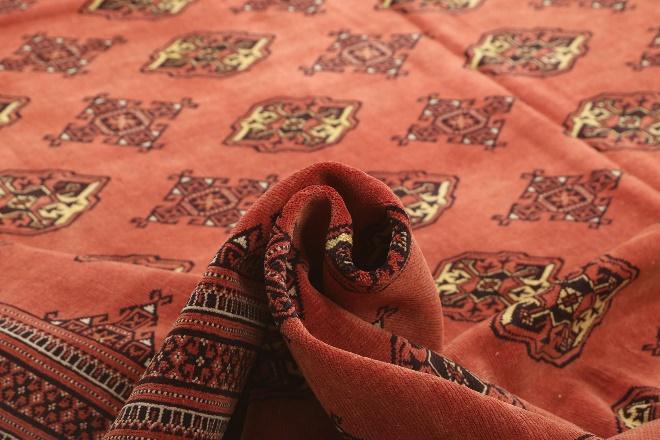
Designs and patterns of the Turkmen rugs
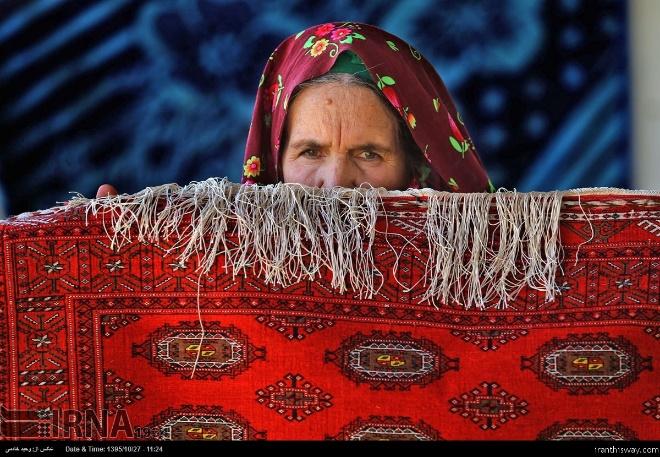
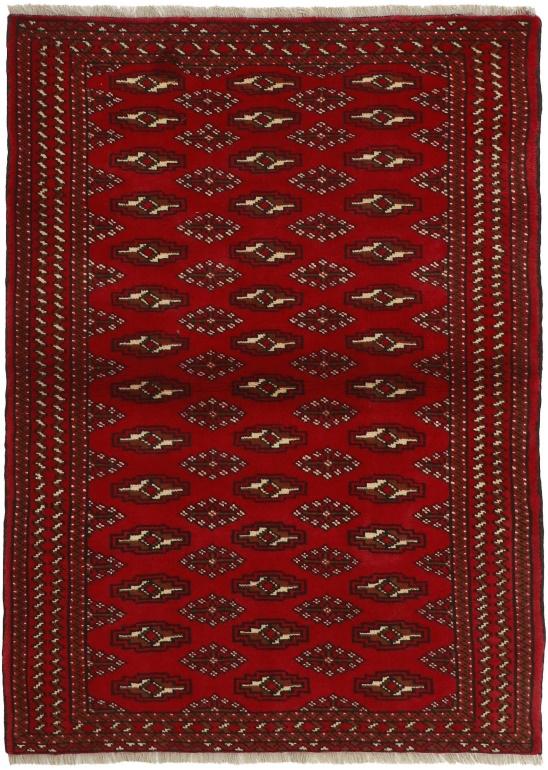
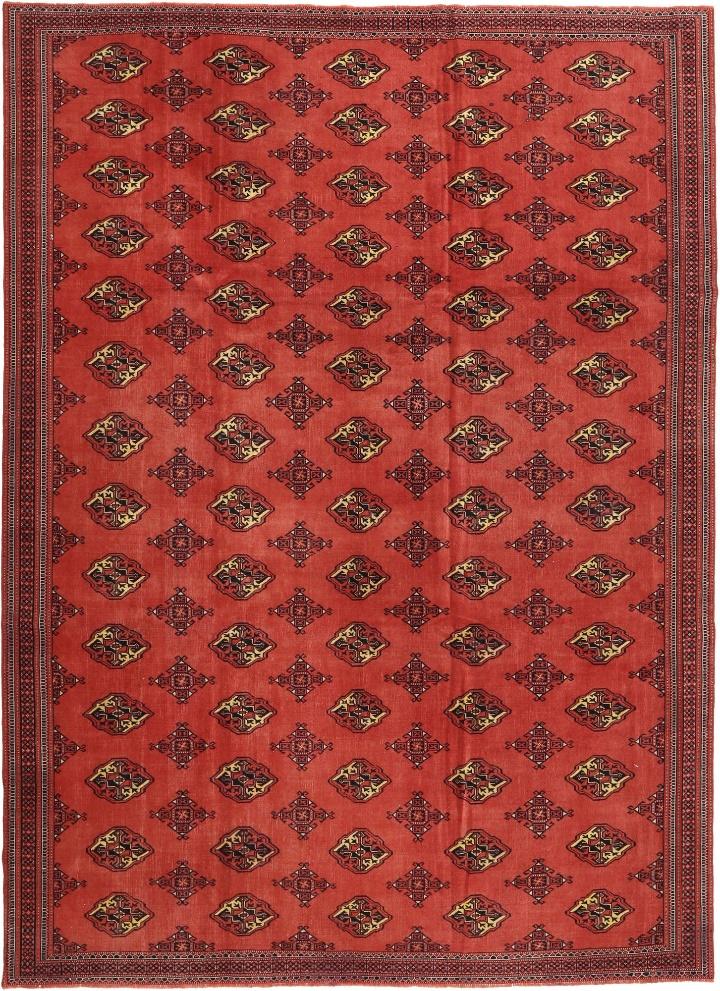
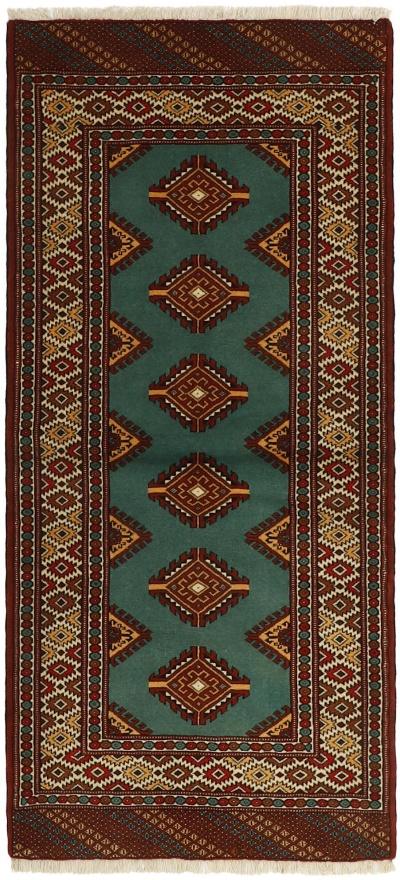
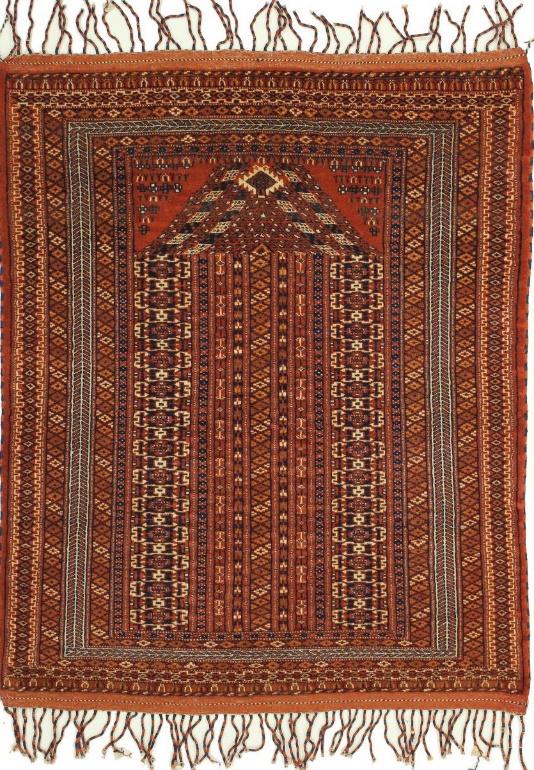
Turkmens have been mixed over time with Iranian peoples of Central Asia such as Sogdians, Chorasmians and Scythians, and also other Turkic peoples of the region. So it is not abnormal to find lots of Persian names for their patterns. According to Ali Hassouri, words such as Filpay (Elephant Foot), Chemche (cupped spoon), Ayna (mirror), Sakar Gul (sugar flower) and etc. tell us these patterns are precedent in the region.

